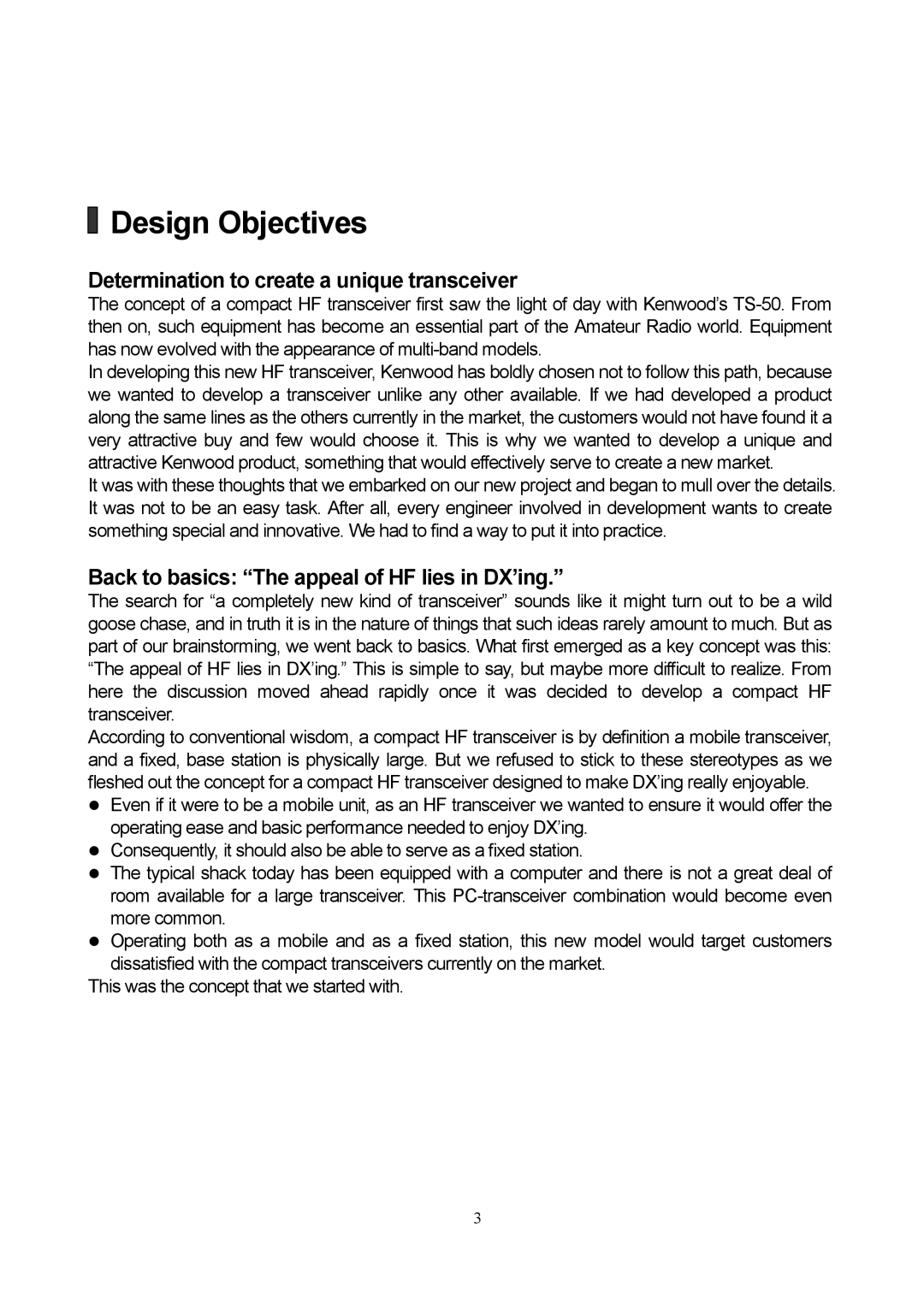
 Design Objectives
Design Objectives
Determination to create a unique transceiver
The concept of a compact HF transceiver first saw the light of day with Kenwood’s
In developing this new HF transceiver, Kenwood has boldly chosen not to follow this path, because we wanted to develop a transceiver unlike any other available. If we had developed a product along the same lines as the others currently in the market, the customers would not have found it a very attractive buy and few would choose it. This is why we wanted to develop a unique and attractive Kenwood product, something that would effectively serve to create a new market.
It was with these thoughts that we embarked on our new project and began to mull over the details. It was not to be an easy task. After all, every engineer involved in development wants to create something special and innovative. We had to find a way to put it into practice.
Back to basics: “The appeal of HF lies in DX’ing.”
The search for “a completely new kind of transceiver” sounds like it might turn out to be a wild goose chase, and in truth it is in the nature of things that such ideas rarely amount to much. But as part of our brainstorming, we went back to basics. What first emerged as a key concept was this: “The appeal of HF lies in DX’ing.” This is simple to say, but maybe more difficult to realize. From here the discussion moved ahead rapidly once it was decided to develop a compact HF transceiver.
According to conventional wisdom, a compact HF transceiver is by definition a mobile transceiver, and a fixed, base station is physically large. But we refused to stick to these stereotypes as we fleshed out the concept for a compact HF transceiver designed to make DX’ing really enjoyable.
Even if it were to be a mobile unit, as an HF transceiver we wanted to ensure it would offer the operating ease and basic performance needed to enjoy DX’ing.
Consequently, it should also be able to serve as a fixed station.
The typical shack today has been equipped with a computer and there is not a great deal of room available for a large transceiver. This
Operating both as a mobile and as a fixed station, this new model would target customers dissatisfied with the compact transceivers currently on the market.
This was the concept that we started with.
3
